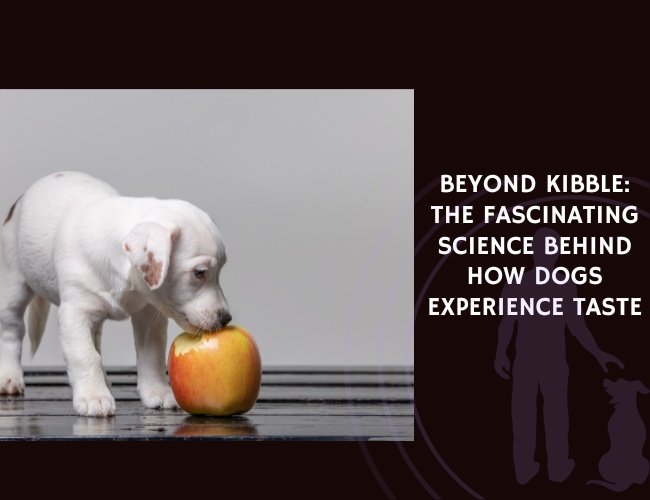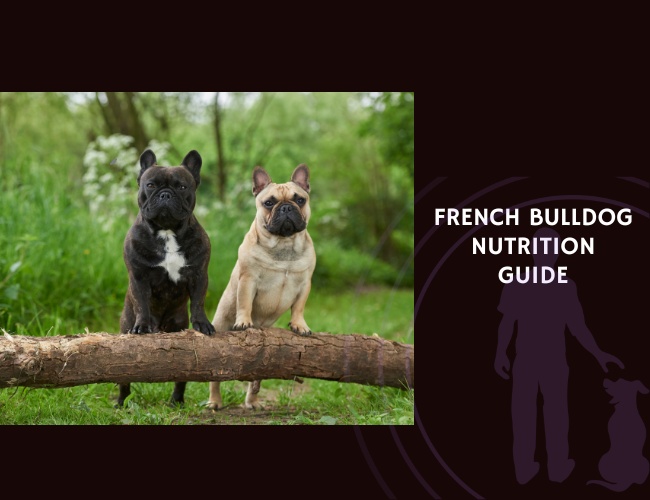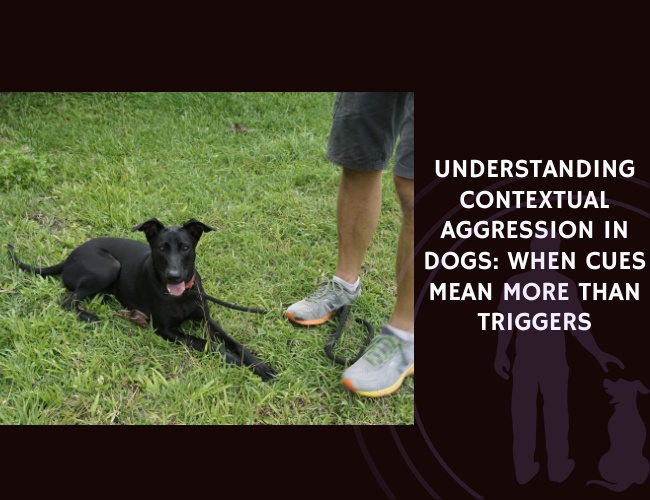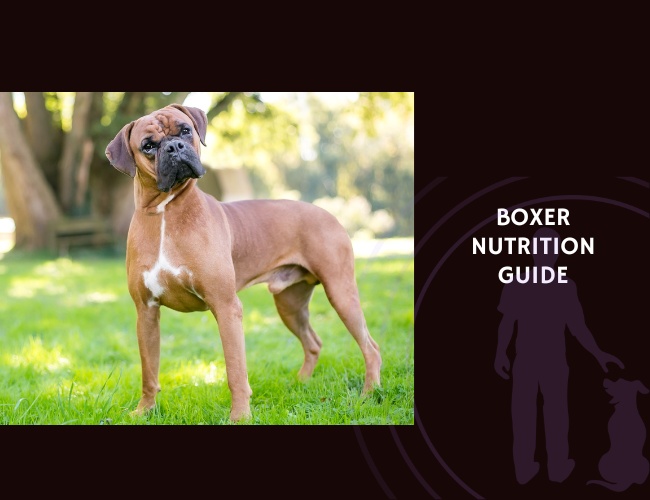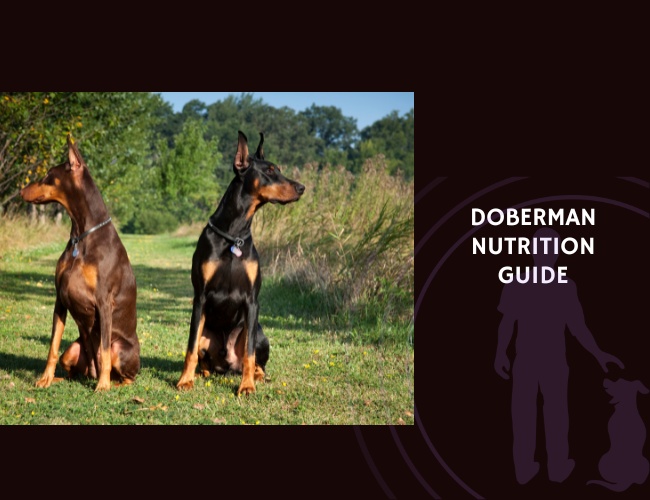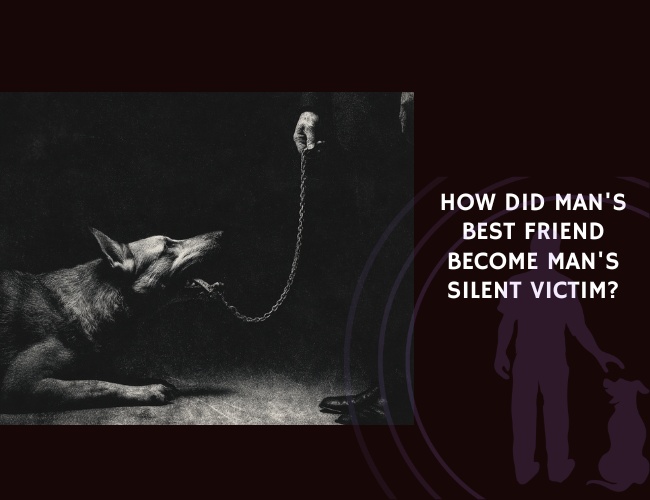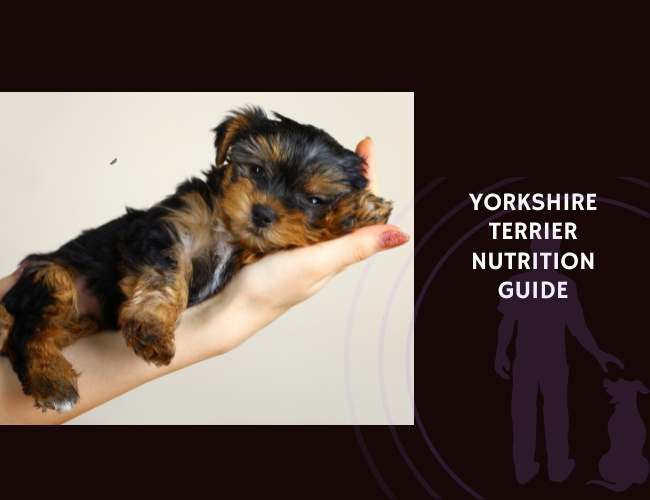Understanding Canine Taste Biology
Dogs explore the world through their senses, and the taste is no exception. Although dogs might not savor the vast spectrum of flavors humans do, they still possess a remarkable taste system tailored to their needs.
Taste Buds: A Closer Look
Dogs have about 1,700 taste buds, which is significantly fewer than the 9,000 taste buds humans boast. This number suggests that dogs have a lower sensitivity to taste compared to humans. However, this does not mean their taste perception is any less critical. The reduced number of taste buds is offset by their highly sensitive olfactory (smell) system, which we will touch on more in the next chapter.
Strategic Placement
Canine taste receptors are strategically placed not just on the tongue, but also in the mouth and pharynx. This widespread location ensures that dogs get a multi-dimensional experience of a flavor, helping them better identify and select their food based on taste and necessity. It’s a fascinating setup that helps them make the most out of every bite.
The Five Tastes Dogs Can Detect
Despite having fewer taste buds, dogs can perceive five primary tastes, similar to humans:
- Sweet: Dogs are known to enjoy sweet flavors, often linked to foods high in energy content. This sweet tooth can be seen when they happily consume fruits or certain vegetables.
- Sour: Generally, dogs show aversion to sour tastes. This is nature’s way of avoiding spoilage and potential toxicity, signaling foods that may be dangerous to consume.
- Salty: While dogs can detect salt, they do not crave it as humans do. Salt is still important for their diets, but they need much less than humans.
- Bitter: Much like with sour tastes, dogs naturally avoid bitter flavors. This aversion acts as a protective mechanism against ingesting potentially harmful or toxic substances.
- Umami: Dogs have a pronounced preference for umami, the savory taste usually associated with meats and rich in proteins. This inclination is deeply rooted in their carnivorous ancestry.
Water-Specific Taste Receptors
One of the unique features of a dog’s gustatory system is their ability to detect water. Dogs have specific receptors located in the tip of their tongues that are fine-tuned to recognize water. This ability plays a crucial role in hydration, ensuring they consume enough water to stay healthy and energized.
Understanding how dogs perceive taste gives us a window into their dietary choices and preferences. While taste is only one aspect of their culinary experience, it’s clear that each taste serves a distinctive purpose, guiding dogs towards food that is both nourishing and safe. This biological setup highlights the fascinating complexity of their tasting mechanism.
Moving forward, it’s important to recognize how these taste perceptions interact with other senses, particularly their highly developed sense of smell, to create the full picture of their eating behaviors. This interplay between taste and olfaction will help us further comprehend what drives their food preferences and how we can better cater to their dietary needs.
The Powerful Role of Smell in Taste Perception
The Olfactory Superpower
Dogs possess an astonishing sense of smell, one that far surpasses human abilities. While humans have around 5 million olfactory receptors, dogs boast over 220 million. This makes their sense of smell a dominant factor in their ability to select and enjoy food. Their exceptional olfaction allows them to dissect the aromatic compounds of their meals long before they take the first bite.
Aromatic Compounds and Food Preference
The presence of aromatic compounds significantly impacts a dog’s food acceptance and preference. When evaluating food, dogs primarily rely on their nose. Before they even begin to taste their meal, the aroma’s appeal plays a critical role. The wide range of smells that dogs can detect means that the aroma of food can either entice or repel them. Foods that emit a strong, appealing aroma are much more likely to be enjoyed by dogs.
The Symbiotic Relationship Between Smell and Taste
Taste and smell are intricately linked for dogs, creating a complete and engaging flavor experience. When a dog encounters food, their sense of smell gathers initial information, which is then confirmed by their taste buds. This combination of smell and taste is essential for dogs to fully appreciate their food. While they may have only about 1,700 taste buds, their ability to detect various tastes, such as sweet, sour, salty, bitter, and umami, is augmented by their powerful sense of smell.
The Intricacies of Flavor for Dogs
Dogs’ flavor perception is a dynamic interplay between olfaction and taste. For instance, aromatic cues guide dogs to prefer foods that are beneficial to them, such as those rich in proteins and fats. This evolutionary trait ensures they select diets that support their needs. On the flip side, smells associated with bitterness or sourness can lead to food aversions, potentially guiding them away from harmful substances.
The Role of Environment and Circumstance
Several external factors can influence how smell and taste impact a dog’s food choices:
- Temperature of the food: Warm food may release more aromatic compounds, making it more appealing.
- Food texture: Dogs may have preferences for crunchy or soft textures depending on their experiences.
- Psychological factors: A dog’s previous food experiences can create positive or negative associations that influence future preferences.
Overall, understanding how dogs use their sense of smell to evaluate their food can provide insights into their feeding behaviors and help pet owners make informed decisions about their diets.
By delving into how dogs perceive flavor through the synergy of smell and taste, we gain a deeper appreciation of their complex sensory world. This knowledge is pivotal for optimizing their dietary experiences and ensuring their overall well-being. As we transition to the next aspect of canine taste biology, we explore the evolutionary factors shaping their taste preferences, further shedding light on their unique gustatory landscape.
Evolutionary Taste Preferences
Dogs have evolved alongside humans for thousands of years, and their taste preferences are rooted deep in their evolutionary history. Understanding these preferences can provide valuable insights into their feeding behaviors and dietary needs.
Natural Inclination Towards Meaty, Fatty, and Umami-Rich Foods
Dogs have a natural inclination towards specific types of food, particularly those that are meaty, fatty, and rich in umami flavors. This preference stems from their carnivorous ancestry.
- Umami Taste: Umami, often described as savory, is a flavor typically associated with meats and protein-rich foods. Dogs’ strong attraction to umami-rich foods is a direct result of their evolutionary history as predators. This preference ensures that they seek out protein, a critical nutrient for their survival.
- Fats: Fat not only adds flavor and palatability to food but also provides a high-energy source that is crucial for active animals like dogs. Evolutionarily, dogs who preferred high-fat foods were more likely to thrive, as these foods provided the necessary energy for hunting and other activities.

Aversion to Bitter and Sour Tastes
Just as dogs are drawn to certain flavors, they are also evolutionarily programmed to avoid others, particularly bitter and sour tastes. This aversion plays a protective role in their survival.
- Bitter: Many toxic substances found in nature have a bitter taste. The evolutionary aversion to bitterness helps dogs avoid ingesting potentially harmful or poisonous substances. This instinctive avoidance can be observed in their refusal to consume certain plants or spoiled food.
- Sour: Similarly, sour tastes can signal spoilage or fermentation, which often indicates that the food is no longer safe to eat. Avoiding sour foods helps dogs steer clear of potentially harmful bacteria and other pathogens.
Breed-Specific Variations in Taste Preferences
While the broad evolutionary trends are consistent across all dogs, there are significant variations in taste preferences at the breed level, influenced by genetics.
- Genetics: Different breeds have been selectively bred for various traits, and this includes differences in taste sensitivity and preferences. For example, some breeds may have a stronger preference for certain protein sources over others.
- Individual Experiences: Beyond breed-specific tendencies, individual experiences also play a crucial role. A dog’s early-life exposure to different types of food can significantly shape its long-term taste preferences. Positive associations with certain flavors or types of food can reinforce these preferences well into adulthood.
Transition to the Next Topic
Understanding the intricate tapestry of evolutionary taste preferences in dogs allows us to appreciate the complex factors that drive their food choices. The next step in our exploration will delve into how physical and environmental influences further shape these preferences and feeding behaviors. This will include a closer look at the impact of food texture, temperature, and early-life experiences, thereby providing a comprehensive understanding of canine taste and feeding habits.
By appreciating the natural inclinations and genetic influences on dogs’ taste preferences, we can better cater to their nutritional needs and enhance their overall well-being.
Physical and Environmental Influences
When it comes to understanding how dogs perceive and enjoy their food, it’s crucial to consider the physical and environmental factors that come into play. These elements can significantly shape their taste preferences and feeding behaviors.
Temperature and Texture Influences
The temperature and texture of a dog’s food can have a major impact on how they perceive its flavor. For instance, some dogs may prefer their food warm, as it can enhance the aroma and make the meal more palatable. On the other hand, cold foods may not release the same aromatic compounds, which can affect a dog’s eagerness to eat.
The texture of food also plays a significant role. Dogs, much like humans, can have different preferences for crunchy versus soft foods. A crunchy texture may stimulate a dog’s interest by providing a satisfying mouthfeel and sound during mastication. Conversely, some dogs may prefer softer textures that are easier to chew and digest. This diversity in texture preference often stems from individual experiences and breed-specific tendencies.
Early-Life Exposure
Just as with humans, the types of food that dogs are exposed to early in life can shape their long-term food preferences. During their critical developmental stages, puppies are more open to trying and accepting a variety of flavors and textures. Positive experiences with certain types of food can create lasting preferences, meaning that what a dog enjoys in its youth can influence its dietary choices as an adult.
Early exposure is not just about what they eat but also the environment in which they eat. Puppies that are raised in a stable, stress-free environment with consistent feeding routines are more likely to develop healthy eating habits. On the other hand, stressful situations or irregular feeding patterns during these formative months can lead to picky eating behaviors later in life.
The Impact of Stress, Illness, and Medications
A dog’s health and emotional state can significantly alter its taste perception and appetite. Stress is a particularly potent factor. Dogs experiencing anxiety or stress may show changes in their eating habits, such as reduced appetite or complete refusal of food. Illnesses can also affect taste perception, as can medications which might alter how food tastes or suppress appetite altogether.
Illnesses often bring about physiological changes that can make food taste different or less appealing. For example, a dog with a respiratory infection might have a diminished sense of smell, which in turn affects their sense of taste. Medications can further impact taste perception; certain drugs might impart a bitter taste or cause dry mouth, making food less attractive.
Understanding these physical and environmental influences is pivotal in addressing a dog’s feeding behaviors. By considering these factors, pet owners and veterinarians can better tailor feeding strategies to meet a dog’s unique needs, ensuring both their well-being and enjoyment of meals. As we learn more about the science behind canine taste, it becomes clear how interconnected these elements are in shaping a dog’s relationship with food.
The Science Behind Commercial Pet Food
Designing commercial pet foods that dogs will eagerly eat involves both art and science. Pet food manufacturers strive to create products that balance flavor, nutritional value, and appeal. With dogs’ discerning palates in mind, advanced techniques and ingredients are employed to ensure these needs are met.
Enhancing Flavor with Palatants and Flavor Enhancers
Pet food manufacturers often turn to palatants and flavor enhancers to make their products more appealing. These substances include natural meat extracts, fats, oils, and yeasts, which can mimic the flavors that dogs instinctively crave. By tapping into dogs’ natural preferences for meaty and umami-rich tastes, manufacturers can increase the likelihood of food acceptance.
Common Flavoring Agents
- Natural Meat Extracts: These provide a savory, meaty taste that dogs find irresistible.
- Fats and Oils: Adding fats and oils enhances the richness of the food, appealing to dogs’ preference for fatty flavors.
- Yeasts: Yeast extracts can provide a savory, umami flavor, which is highly attractive to dogs.
Rigorous Flavor Testing and Animal Panels
Before reaching store shelves, commercial pet foods undergo extensive flavor testing. This process ensures that the final product not only meets nutritional standards but also appeals to dogs’ taste buds.
The Role of Animal Panels
Animal panels are a critical component of this testing. These panels consist of dogs who sample different food formulations. Their reactions and preferences are closely monitored to determine which formulations are most appealing. This method allows manufacturers to refine recipes and adjust flavor profiles to better suit canine tastes.
Balancing Nutrition with Taste
While taste is essential, it is equally important to ensure that pet foods meet dogs’ nutritional requirements. Creating a balanced diet that also appeals to dogs’ taste preferences is a challenging but crucial task for pet food manufacturers.
Nutritional Requirements
Dogs need a variety of nutrients to maintain their health. These include proteins, fats, vitamins, and minerals. However, some nutrient-rich ingredients may not be naturally palatable to dogs. This is where the science of flavor enhancement comes into play.
Formulating Balanced Diets
Manufacturers must carefully formulate pet foods to ensure they provide all necessary nutrients while remaining appetizing. By using flavor enhancers strategically, they can mask less desirable tastes and highlight flavors that dogs enjoy. This creates a product that is both healthy and delicious.
As commercial pet food science continues to evolve, the focus remains on understanding and enhancing dogs’ taste experiences. This approach not only ensures that dogs enjoy their meals but also supports their overall health and well-being. The intricacies of canine feeding behaviors and preferences guide these innovations, fostering a deeper connection between dogs and their dietary needs.
Understanding and Addressing Feeding Behaviors
Feeding behaviors in dogs can be complex and multifaceted. Understanding the underlying reasons behind these behaviors is critical for ensuring that our canine companions maintain healthy and balanced diets. In this chapter, we’ll delve into the nuances of genuine food aversion versus environmental factors, explore the role of texture preferences and food boredom, and discuss strategies for fostering healthy eating habits while respecting dogs’ taste preferences.
Distinguishing Between Genuine Food Aversion and Environmental Factors
One of the first steps in addressing feeding issues is to determine whether the problem stems from genuine food aversion or environmental factors. Dogs may refuse food for various reasons, including:
- Medical Conditions: Illness, dental problems, or gastrointestinal issues can make eating uncomfortable or painful. It’s important to consult a veterinarian to rule out any health concerns.
- Stress and Anxiety: Changes in routine, new environments, or the presence of unfamiliar people or animals can lead to stress, affecting a dog’s appetite and eating behavior.
- Food Aversion: Dogs might develop an aversion to certain foods due to negative experiences, such as previous illness after eating specific items.
It is crucial to observe the context in which the feeding issue arises. If a dog normally eats well but starts to reject food suddenly, environmental or medical factors might be at play.
The Role of Texture Preferences and Food Boredom
Just like humans, dogs have individual preferences when it comes to the texture of their food. These preferences can significantly impact their eating patterns:
- Texture Aversion: Some dogs may prefer crunchy kibble, while others might favor softer, wet food. An understanding of these texture preferences can assist in selecting the right type of food for your pet.
- Temperature Sensitivity: The temperature of food—whether warm or cold—can also affect its appeal. For instance, offering slightly warmed food can sometimes entice picky eaters.
Additionally, dogs can experience food boredom if given the same meal repeatedly. Rotational diets, which involve varying their food regularly, can help keep their interest piqued and ensure a well-rounded diet. Experimenting with different proteins, forms (dry vs. wet), and even homemade meals can break the monotony.
Strategies for Maintaining Healthy Eating Habits
Formulating effective strategies to maintain healthy eating habits in dogs involves a combination of respecting their preferences and encouraging balanced nutritional intake. Here are some practical tips:
- Consistent Feeding Schedule: Establishing a regular feeding routine helps create a sense of security and predictability for dogs, contributing to better eating habits.
- Positive Reinforcement: Rewarding dogs with praise or treats when they exhibit desired eating behavior reinforces positive associations with mealtime. Avoid using food as the only form of reward to prevent overfeeding.
- Environment Management: Creating a calm and distraction-free feeding environment ensures that dogs feel safe and focused on their meal. This environment is particularly important for anxious or easily stressed dogs.
- Gradual Introduction of New Foods: Introducing new foods gradually can help avoid sudden rejection. Mixing a small amount of new food with their regular diet and slowly increasing the proportion can aid in smooth transitions.
By understanding and addressing the various factors influencing feeding behaviors, dog owners can effectively support their pets in maintaining healthy, enjoyable feeding routines. Remember, patience and observation are key to discerning the specific needs and preferences of your canine companion. Through thoughtful management and a compassionate approach, you can navigate and resolve many feeding challenges, ensuring your dog enjoys their meals while receiving optimal nutrition.

